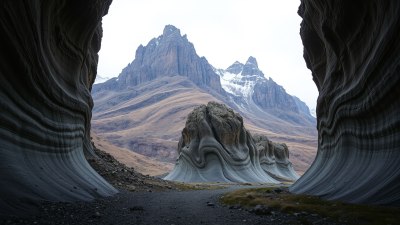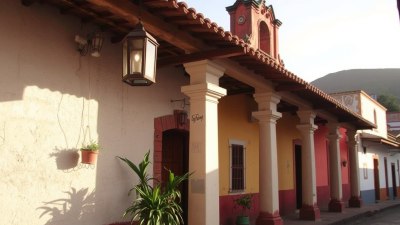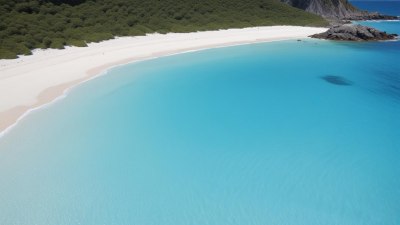Whispers in the Wind Tunnels of Patagonia
Explore the enchanting landscapes and mysterious wind tunnels of Patagonia, a place of natural wonder.

Patagonia, located at the southern end of South America, is known for its breathtaking landscapes, diverse ecosystems, and unique geological formations. Among these wonders are the enigmatic wind tunnels that weave through the region, shaping the environment and sculpting the land in unexpected ways. These tunnels create a distinctive sound, reminiscent of whispers, as the wind passes through them, lending a mysterious ambiance to the already stunning vistas.
The origins of these wind tunnels are rooted in the geology of Patagonia. Formed over millions of years, the region's distinctive topography consists of mountain ranges, valleys, and plateaus that interact with the prevailing winds. These natural structures concentrate and redirect airflow, creating narrow passages known as wind tunnels. Inside these tunnels, wind speeds can reach astonishing levels, often exceeding 100 kilometers per hour. This phenomenon has had a profound influence on the local climate and ecology.
The Climate of Patagonia
Patagonia is characterized by dramatic weather patterns, heavily influenced by the Andes mountain range. The western part of Patagonia is typically wet, with plentiful precipitation that nourishes lush forests. By contrast, the eastern region experiences a rain shadow effect, resulting in arid landscapes characterized by steppe and semi-desert environments. The wind tunnels play a crucial role in this climatic disparity, facilitating the movement of moist air from the Pacific Ocean towards the interior.
The whispers created by the wind as it navigates through these passages add an ethereal quality to the natural surroundings. Many visitors to Patagonia report feeling a connection to the landscape as they walk through these tunnels, listening to the subtle sounds shaped by the force of nature. This auditory experience enhances the sense of adventure and exploration that defines travel in this rugged region.
Soundscapes and Their Impact on Experience
The soundscapes produced within Patagonia's wind tunnels are not just a backdrop; they actively influence the experience of those who venture into them. The varying pitches and volumes of the wind create an immersive environment, almost akin to music composed by the earth itself. These natural acoustics can evoke a range of emotions, from peace and serenity to exhilaration.
Moreover, the whispers of the wind serve as a reminder of nature's power and unpredictability. Hikers and adventurers often find themselves reflecting on their own vulnerability in the face of such force, while also appreciating the beauty that can emerge from these wild spaces. The tunnels are a place of introspection and revelation, where the external environment leads to internal contemplation.
Wind Tunnel Locations
Several key locations in Patagonia are renowned for their wind tunnels. One such area is Torres del Paine National Park, famous for its striking granite peaks and diverse wildlife. The park's variable topography contributes to the formation of numerous wind tunnels, making it a prime destination for both scientists studying meteorological phenomena and travelers seeking adventure.
Another notable spot is the town of El Chaltén, often called the trekking capital of Argentina. The surrounding mountains create ideal conditions for wind tunnels, allowing visitors to experience their power firsthand while embarking on challenging treks like the Laguna de los Tres. The stunning views combined with the raw force of the wind create a lasting impression on all who visit.
Wildlife Interaction with Wind Tunnels
The unique climatic conditions fostered by the wind tunnels also play a critical role in the area's biodiversity. Various animal species have adapted to the harsh conditions, taking advantage of the resources available in this challenging environment. Birds, particularly, thrive in these windy landscapes, migrating and hunting with the aid of the prevailing winds.
One can find the Andean condor, one of the largest flying birds in the world, gliding effortlessly on thermal updrafts generated by the mountains and wind tunnels. These majestic birds symbolize the spirit of Patagonia, embodying both grace and power as they soar high above the rugged terrain. Additionally, smaller creatures, such as Darwin's rhea and guanacos, navigate the steppe landscapes, showcasing their resilience in the face of extreme weather.
Archways and Geological Features
Within the wind tunnels, visitors may encounter extraordinary geological features shaped by the persistent forces of nature. The landscapes contain stunning rock formations, arches, and cliffs that have been sculpted over time by wind erosion. These natural sculptures serve as a testament to the power of the elements and the passage of time.
One such formation is the famous Marble Caves on Lake General Carrera, where swirling patterns of sedimentary rock create an almost surreal visual experience. The interaction of wind and water continues to shape these formations, adding to their allure. Exploring such natural wonders provides an opportunity for visitors to appreciate the dynamic processes that shape the earth.
Cultural Significance
The wind tunnels of Patagonia hold a cultural significance as well, having inspired generations of indigenous peoples and modern adventurers alike. The indigenous Mapuche and Tehuelche tribes viewed these winds as spirits of the landscape, embodying both majesty and mystery. Tales surrounding these natural formations often reflect the connection between the land and its inhabitants.
Today, artists, writers, and musicians draw inspiration from the whispers of the wind, conveying the essence of Patagonia through various forms of expression. The natural landscapes, coupled with the haunting sounds of the wind tunnels, lend a voice to the land, allowing it to speak through art and storytelling.
Conservation and Future Perspectives
As the importance of preserving Patagonia's natural landscapes becomes increasingly recognized, conservation efforts are being implemented to protect the delicate ecosystems found in these wind tunnels. Organizations work to ensure the integrity of the environment while promoting sustainable tourism practices. Initiatives focus on balancing human activities with the preservation of wildlife habitats and geological features.
The future of Patagonia's wind tunnels lies in the hands of both government bodies and local communities. Collaborative efforts can lead to the establishment of protected areas that secure these unique geological formations for future generations to appreciate. By fostering a culture of respect for nature and promoting educational initiatives, visitors can connect more deeply with the landscapes they explore, understanding the value of preserving the beauty that exists within these wind tunnels.
Experiencing Patagonia’s Wind Tunnels
For those fortunate enough to explore the wind tunnels of Patagonia, the experience is sure to be unforgettable. Travelers are encouraged to hike, kayak, and venture into the relatively untouched areas where the whispers of the wind create a lasting impression. Guided tours may offer insights into the geology and ecology of the region, allowing visitors to grasp the significance of each whisper and breeze.
In conclusion, the wind tunnels of Patagonia are more than mere geological formations; they are dynamic landscapes filled with sound, significance, and vibrant life. The whispers carried by the winds tell stories of time, change, and resilience, inviting each visitor to immerse themselves in a world where nature reigns supreme.











